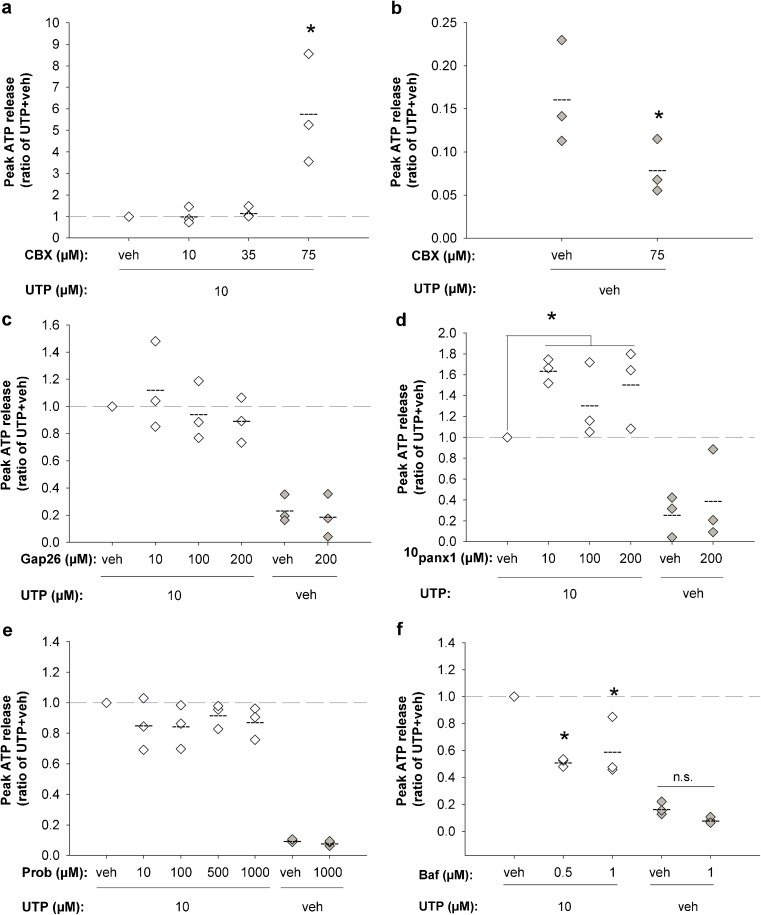Fig. 5.
Analysis of the UTP-induced ATP release pathway. ATP release induced by 10 μM UTP (100 μl/s) was challenged by pharmacological inhibitors. a 10–35 μM CBX had no effect on ATP release, whereas 75 μM CBX resulted in a dramatic increase in ATP release of >5-fold. b The addition of vehicle instead of UTP induced the release of a small amount of ATP from the cells corresponding to approximately 15 % of the UTP-induced ATP release. When 75 μM CBX was added to this setup, ATP release was reduced by approximately 50 %. c Gap26-mediated inhibition of Cx43 hemichannels did not affect ATP release. d 10panx1-mediated inhibition of Panx1 channels was associated with significantly increased ATP release, when the treated group was compared to the vehicle group. e Probenecid (Prob)-mediated inhibition of Panx1 channels did not affect ATP release. f Bafilomycin A1 (Baf) treatment resulted in up to 49 % reduction of UTP induced ATP release. Diamond represents ATP release in ratios of the control group (UTP + vehicle of the inhibitor), broken line represents mean ATP release in ratio of vehicle and asterisk represents p ≤ 0.05

